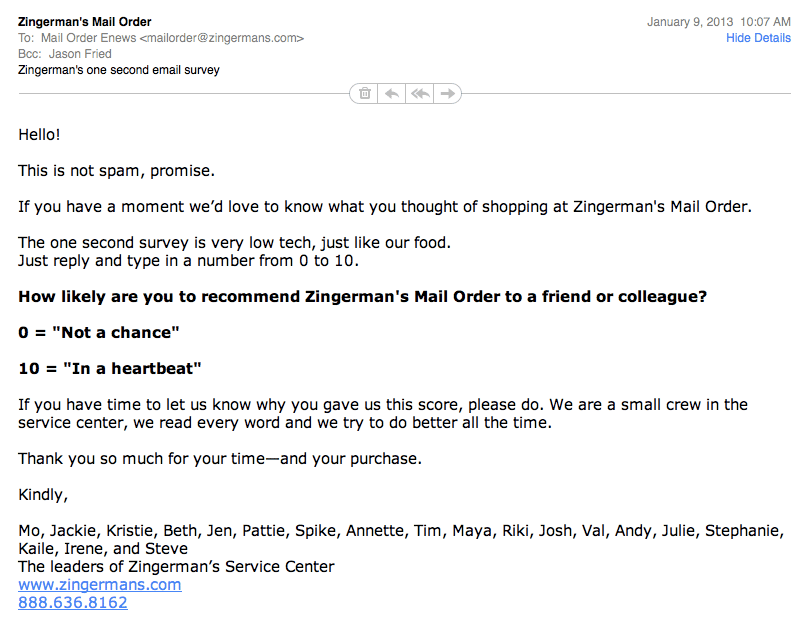Writing Engaging Customer Surveys That Get Responses
5 actionable ways to optimize surveys for high-quality user feedback.
Customer surveys are one of the best ways to get qualitative information about how your customers are feeling about your product, services, and other offerings. Surveys allow people to share constructive and positive insights in a place where they can feel comfortable speaking candidly, rather than directly to the face of a question-asker. Often, the depth of responses you get in a written survey will go beyond what you’d uncover in a face-to-face or over-the-phone interview.
Surveys allow people to share constructive and positive insights in a place where they can feel comfortable speaking candidly.
That being said, 80% of consumers abandon surveys halfway through, and 72% believe that surveys interfere with their experience of a product or service. Fortunately, there are some best practices you can use to improve your survey response rates. Here are five ways to create engaging surveys and collect even more user feedback.
1. Segment and target appropriately
Have you ever received a marketing email that has nothing to do with anything that you’re interested in? Most of us have. When a company blast emails out to anyone—regardless of whether the recipient matches their target audience— it results in noisy inboxes and frustrated consumers. The sheer volume of marketing emails that go out had led to consumers becoming more selective about which emails they engage with; according to Smarter HQ, 72% of consumers in 2019 only open or click marketing messages that are customized to their specific interests.
The sheer volume of marketing emails that go out had led to consumers becoming more selective about which emails they engage with.
Our recommendation:
Targeting doesn’t just apply to emails. When it comes to sending surveys, companies can, and should, take the importance of targeting to heart. Using historical and customer data, you run a better chance of collecting survey responses if you target the appropriate people at the appropriate time for your surveys.
Using historical and customer data, you run a better chance of collecting survey responses if you target the appropriate people at the appropriate time for your surveys.
For example, if someone just signed up for an account, it might not be the best time to ask them how they feel about your product offering. It could be a good time to ask them about how easy your purchase process was, though. Creating relevant messaging and reaching out at the right time helps your customers feel like you care about them.
Added bonus: By making clever decisions about when to reach out to people, you prime yourself to receive the freshest, most relevant feedback.
2. Incentivize it
Researchers from the US Department of Veterans Affairs found that the promise of a $5.00 cash incentive upon survey completion increased response rates by 30% and that actually providing the $5.00 upfront increased response rates by 50%. While incentivization can definitely skew customer feedback towards the positive, they are an excellent way to drive responses to your surveys.
Our recommendation:
To get the most out of survey incentives, pay close attention to how and where you are using incentivization. You might find that some incentives work better than others for your customers. To find what works, try running A/B tests for randomly selected groups, comparing survey response rates for different incentives (for example, an Amazon gift card versus company credit).
Try running A/B tests for randomly selected groups, comparing survey response rates for different incentives.
Similarly, consider what types of surveys you are incentivizing. Generally, incentives will be more impactful for longer, more in-depth surveys—try not to use them for things like Customer Satisfaction (CSAT) or Customer Effort Score (CES). It is also important to note that using incentives around CSAT or CES could urge users to not be as blunt or honest as they normally would have been with their feedback. To get the best, most transparent answers, you should leave these types of surveys unincentivized.
Generally, incentives will be more impactful for longer, more in-depth surveys.
3. Keep it short
People have incredibly short attention spans. In fact, 45% of people are willing to spend 5 minutes, at most, on your feedback survey, while 33% are willing to spend up to 10 minutes.
Our recommendation:
Try to keep your surveys as short as possible while still making sure that all the questions that you need to ask are covered. In the same regard: don’t ask for any information that you might already have. The more questions you ask, the longer it will seem and the more likely your users will be to abandon your survey.
One way to do that is by using forms with pre-filled data fields. Chances are, you already have a lot of customer data, especially if you are emailing specific users that you have targeted about the survey. If so, pre-fill data fields such as email, name or demographic information to focus on the meaty part of the survey where you actually need customer input.
Pre-fill data fields such as email, name or demographic information to focus on the meaty part of the survey where you actually need customer input.
Keeping surveys short can also improve the quality of the data you receive. By the 20-minute mark within a survey, the attention of respondents greatly diminishes—leaving you with subpar, potentially rushed answers. For some inspiration on how to keep surveys concise, check out this awesome one-second survey from Zingerman’s:

4. Don’t stop on the first ask
For sales, it takes an average of eight cold call attempts to reach a prospect. While it’s probably not good to reach out that many times to try to get good survey responses, you shouldn’t feel sheepish about reaching out twice (or even three times) just to remind customers that you’re looking for more information. After all, it is entirely possible that your first request for information got missed by the customer—especially if you’re sending surveys by email.
Our recommendation:
Take a page from sales’ book and, if a customer doesn’t respond the first time you ask for a survey response, follow-up and ask again. Test out different variations too; instead of just sending the same email with the same subject line over and over again, try a few different versions to see if one is more successful than the others. This does the double duty of getting your customers’ attention, and A/B testing potential email subjects for the future.
Instead of just sending the same email with the same subject line over and over again, try a few different versions.
5. Ask straightforward questions
There are so many different ways to ask the same question. Take for example the question “Did you enjoy that meal?” Here are a few different ways you could ask the same question less directly:
- Was that the best meal you’ve ever had? (This is a leading version of the question.)
- Did that meal satisfy you more or less than the last meal that you had at another restaurant and which restaurant did you last eat at? (This asks for too much information in a single question.)
- When you ate dessert, did it complement your meal well? (This assumes that they ate dessert.)
- We serve excellent seafood. Agree or disagree? (This is a pushy and aggressive question.)
- Did you not think that our food was delicious? (This is a confusing version of the question.)
- Did you drive your car to the restaurant? (This is unrelated to the question.)
- Do you think your friends would like our food? (This is ambiguous.)
Our recommendation:
When asking survey questions, stick to direct questions that have a defined answer. Try to be sure that you cover every potential answer that someone could give, and ask the question in a way that is easy to understand. The more direct and simply-structured your questions are, the better your response quality will be.
Stick to direct questions that have a defined answer.
Embrace user insights as one of your best learning opportunities
Surveys are an excellent way to aggregate data about your customers and their sentiments around your product and service offerings. That being said, if they are done incorrectly, you’re just as likely to get no answer as you are to get a great one. Follow the five steps outlined above to create more user-friendly surveys that drive responses and data quality. Keep it short, sweet and targeted to get valuable insights from the people that have the freshest experiences. And remember: surveys are only as insightful as you make them, so use your time wisely and ask about the things that actually make sense and matter!

Sarah Chambers
Editor-in-Chief, Chatra
Sarah Chambers is Editor-in-Chief for Chatra, a messaging tool for small businesses. She also runs Supported Content, a boutique marketing agency for customer service businesses. When she's not furiously typing away, she's climbing, knitting or snowboarding in the mountains of Western Canada.
More from Sarah




